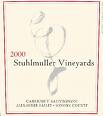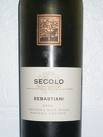 I read with more than a passing interest the recent duke-out by Wine Review Online columnists Michael Franz and Michael Apstein on the thorny issue of wine pricing. Perhaps it is time for me to throw another log on the fire.
I read with more than a passing interest the recent duke-out by Wine Review Online columnists Michael Franz and Michael Apstein on the thorny issue of wine pricing. Perhaps it is time for me to throw another log on the fire.
I am a free-market guy and have long held that markets should be allowed to establish the price of any commodity. I sincerely believe this is the reasonable approach. No one is twisting your arm to overpay for a bottle of wine.
Yet I wince at some of the prices I see. And I sense there is a gathering backlash, particularly from restaurateurs and retailers who do voluminous business in fine wine.
While having lunch a couple of weeks ago at the restaurant Milles Fleur in the San Diego suburb Rancho Sante Fe, one of the priciest zip codes in the United States, the proprietor and my longtime friend Bertrand Hug grimaced and shook his head when the topic of wine pricing was broached.
It came up because in the bull session over lunch it came up that another friend, restaurateur and retailer Ed Moore, had been quoted to the tune of something like “I’m getting sick and tired of all these $100 wines!”
My apologies if Ed was misquoted, but I think that sentiment is certainly growing.
“My customers (some of the richest folk in these parts) are comfortable with wines on the list at between $60 and $80,” said Bertrand. “If I have to list a wine at more than $100, it just sits there.”
 Of course, Bertrand’s cost is much lower than the wine list price, so he’s saying that the wines that sell to his sophisticated clientele have a retail value of between $25 and $40. That’s a nice range and one that offers plenty of terrific options.
Of course, Bertrand’s cost is much lower than the wine list price, so he’s saying that the wines that sell to his sophisticated clientele have a retail value of between $25 and $40. That’s a nice range and one that offers plenty of terrific options.
I’m reminded of this because I had a small tasting this week of Cabernets, Bordeaux blends and Syrah that yielded a number of recommendations that you will be able to find this on the Wine Review Online Reviews page. All of the wines I really liked came in between $17 and $36.
The 2005 Sebastiani Secolo, the ’05 Stuhlmuller Estate Cab, the ’05 Clos du Val Cab, and a couple of different Syrahs from C. G. Di Arie, which are lovely if you can get past the funky and confusing labels. Those are just a handful of the excellent modestly priced reds I plowed through.
So why bother with the $100 wines? Why do I review them? First, let me agree there are too many. But wine enthusiasts, many of them our readers, buy them and deserve an honest evaluation even if some of these wines aren’t what I might rush out to purchase.
In many cases, the price the market has established is both a function of quality combined with scarcity. What comes to mind are first-growth Bordeaux and Napa Valley legacy wines such as Spottswoode Cabernet, Shafer Hillside Select and Joseph Phelps Insignia.
Those wines fetch handsome prices because they’ve established their bonafides over many vintages and they are rare. I don’t have a problem with that. What’s hard to swallow — quite literally — are some of the wines from newer estates that charge outrageous prices because they believe that will bring instant cachet. And because they have to.
 No one who bought a Napa wine estate over the past ten years got it on the cheap. Such purchases were pure speculation and only pencil out based on selling the estate’s wine at a very high price point.
No one who bought a Napa wine estate over the past ten years got it on the cheap. Such purchases were pure speculation and only pencil out based on selling the estate’s wine at a very high price point.
You should feel no obligation to bail out those folks. You can enjoy great red wine from the Napa/Sonoma region, and even, in some cases, Bordeaux for price points well below the $100 mark.
And that’s a fact.
8
